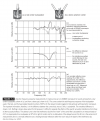"For some reason, my Denon 4700 does not allow Auro-3D as an option with stereo input. It only displayed an option for 2D, so I did not get to test what Auro mixes for the heights."Tried a comparison between Auro-2D, DSU, and stereo last night. It is very difficult to make a comparison, as each upmixer uses different levels across the board, some with exaggerated bass. I used my Radio Shack SPL meter with B weighting to try to get them close.
My impression of DSU is still the same: very weak fundamental signal that is very wet with reverb in the surrounds and heights. Center channel is still too strong even with center spread turned on. Subwoofer level too high. It may sound great with some tweaking, but then my system would be off for video sources, so I would need to maintain different presets.
Auro-2D was better, but instrument location across the front was frequently off--especially with drums. Acoustic bass would sometimes float across the speakers. This really confused the image of the stage. The surrounds received attenuated versions of the LR. Center level and mix was better than DSU.
In the end, I still chose stereo. Maybe I would care more about multichannel if I had better surround speakers?
For some reason, my Denon 4700 does not allow Auro-3D as an option with stereo input. It only displayed an option for 2D, so I did not get to test what Auro mixes for the heights.
Here is what Denon has to say about the various sound modes:
Dolby Surround
This mode uses Dolby Surround Upmixer to extend various sources to natural and realistic multi channels for playback.
Use ceiling speakers such as top middle speakers to realize a three-dimensional sound field.
Auro-3D
This mode uses an Auro-3D decoder to create three-dimensional audio output using the Height Channel. It is ideal for playback of signals encoded as Auro-3D with a Height Channel. If signals not encoded as Auro-3D are input, an Upmixer called the Auro-Matic is used to create highly realistic three-dimensional audio output.
Auro-2D Surround
This mode uses an Auro-3D decoder to create Surround Sound without a Height Channel. It is ideal for playback of signals encoded as Auro-3D without a Height Channel. If signals not encoded as Auro-3D are input, an Upmixer called the Auro-Matic is used to output Surround Sound.
Anyone know why the 4700 does this?

